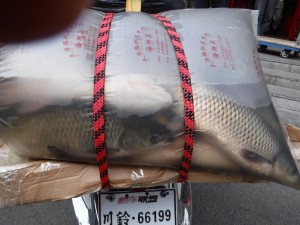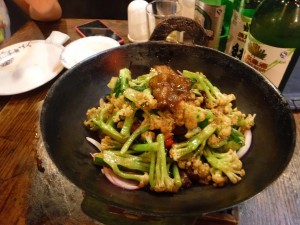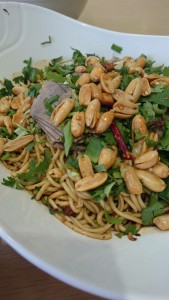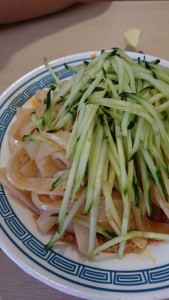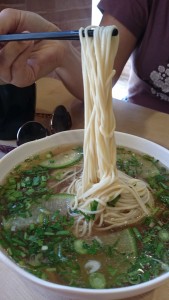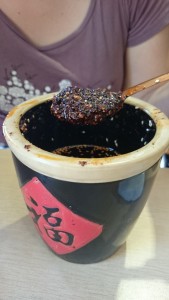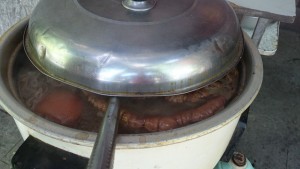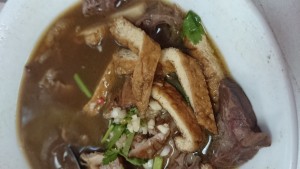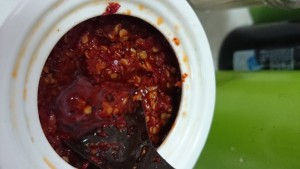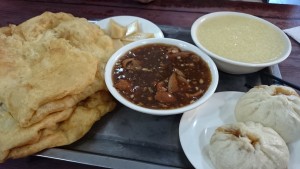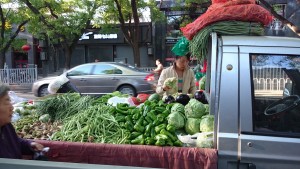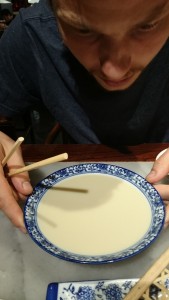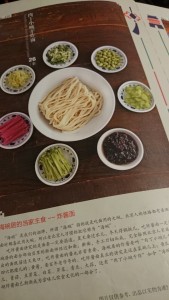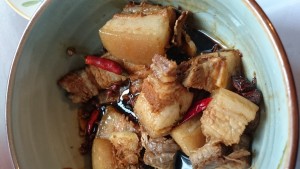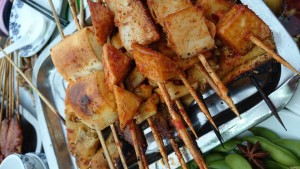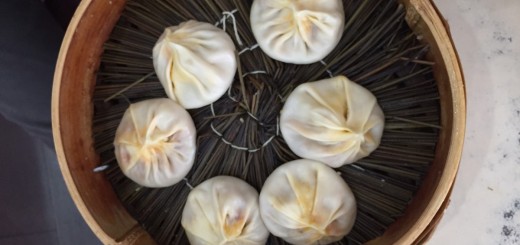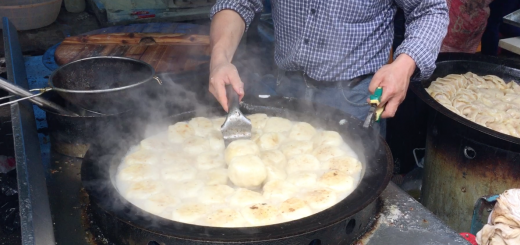Beijing Cuisine
After spending a week in Beijing eating as many local dishes as we could fit into our stomachs we have come to some conclusions about what makes this cuisine its own.
Some of the local foods we ate were Beijing duck, dry fried organic cauliflower, a micro-green called toon with bean curd salad, Zha jiang noodles, stir fried liver in potato starch soup, bao zi with pork and green onion, sweet pea paste, mung jiang shao bing (sesame paste baked bread 15 layers) jiao yan shao bing (salt and pepper baked bread) as well as a brown sugar version, you bing (deep fried bread doughnut with no sugar), Jian bing (a crepe made from mung bean with egg, chili oil, cilantro layered with a deep fried crispy, bubbly bread for texture, a common breakfast snack, Beijing style hotpot, a very commonly consumed local yogurt honey drink lao beijing which translates to “old beijing”. The reusable ceramic cups can be seen in masses on every street with straws poked through the top, vendors will give you 1 yuan (about 18 cents) back if you return the contained. We’ve also been enjoying a lot of the Beijing yogurt popsicles you can buy at almost any street side vendor. We’ve enjoyed soy milk as something warm to drink in the morning as well as a fermented soy milk drink with dinner one night that you drink out of a small bowl. Ze’s friend Bob recommended this fermented drink when he heard we were trying to drink local foods. He says the younger generation doesn’t enjoy it’s soured flavor, that of something that seems like maybe you should throw it out. Ze and Daniel both liked this drink a lot, Ze said it was like drinking sauerkraut. After a long day of hiking around the great wall we went out for northern style barbecue, starting with thousand year old eggs and a kind of diced lettuce stock stirfried with potato starch to make a slippery texture thats a test to even the best chopstick skills (most of us retreated to our soup spoons) then all the grilled things: barbecued chicken wings marinated with 20 different types of spice overnight then seasoned with cumin and hot pepper, tofu skins, chicken hearts, lamb kidneys, beef tendons, and garlic. This barbecue is notably influenced by the Muslim population with its seasonings and lack of pork (rare elsewhere in Chinese food).
Something notable about Beijing food to all of us were very salty flavors from the use of fermented soy bean paste in many sauces and soups and stir fries. I think it’s interesting the way Chinese salt their foods vs America. While we will salt our food before, during and after cooking with pure salt, here they prefer to use salty ingredients like fermented foods and soy sauce. The condiments on every restaurant table are never salt and pepper, but soy sauce, vinegar and hot chili oil. I have found that Beijing food is also simple plain foods without any strong flavors. There is a ton of popular street foods that are simple baked and fried breads that the locals will consume around the clock as a quick convenient snack. We met a couple from Mexico who whispered loudly to us in a restaurant that they hadn’t found anything special about the food here, “There’s just no flavor!” in a hushed yell. I think maybe these staple flour based foods and salty fermented foods make you crave both individually, both a break from each other.
The restaurant service we have found to be totally different from that at home. Waiter quickly seat you, take your order and minutes later you are served your food. When you sit down you will normally find a package on your table of chopsticks, a napkin, sometimes a toothpick, all wrapped up in plastic. Sometimes even your plate, bowl, cup and soup spoon are all plastic wrapped as well. Ze hates this and has several times expressed her disgust for the amount of plastic this wastes. She will ask the waiter for unwrapped chopsticks if they have any. Upon further investigation she found out from her friend that this is a government heath code order, most restaurants have to outsource there dishes for sanitation. She says next time she is going to see if they will give us unwrapped bowls and plates as well. I think she is the only person in the whole country asking for these things, it is fun to watch waiters respond. They don’t normally interact much, unlike the U.S. waiters who are asking you loads of questions about how your day’s been and if you liked your food and filling up your already full glass of water. Lots of the restaurants we’ve been to haven’t even given us any water at all and when they do it just been boiled to make sure its clean. This is always a small moment of realization about our luxurious amount of clean water that we don’t think much of, and waste like there’s no tomorrow. I like the no-bullshit style of service- you are here for food–here it is fast and hot. They don’t talk to you but get anything you ask for immediately. I speculate that a lot of this has to do with tip culture and non-tip culture. American waitstaff feel the need to put on a facade of everything is perfect and a feeling of “we are friends” because there wage depends on tips, which is not true here so there is no need for the waiter to interact with you at all unless you ask about something.
Another difference noted is the interior of restaurant and what they say about the food. I feel like in the states if you see a place that looks run down and dirty you can expect bad food for sure. Here tiny grubby looking 10 x 20 hallways with a few little tables put out the most delicious smells that lure you right in, and you can tell by purely the scent that you are about to be eating an incredible bowl of organ stew. Minutes later the whole place will fill up promptly for lunch time, these people don’t mess around when it’s time to eat. This made me think of Ze, appalled that she sometimes has to wait in class so long especially when it’s lunch time. The first day we were here walking to find dinner there were people out everywhere accomplishing random activities talking all around us, Ze giggled and told us, “They are all talking about food!”
